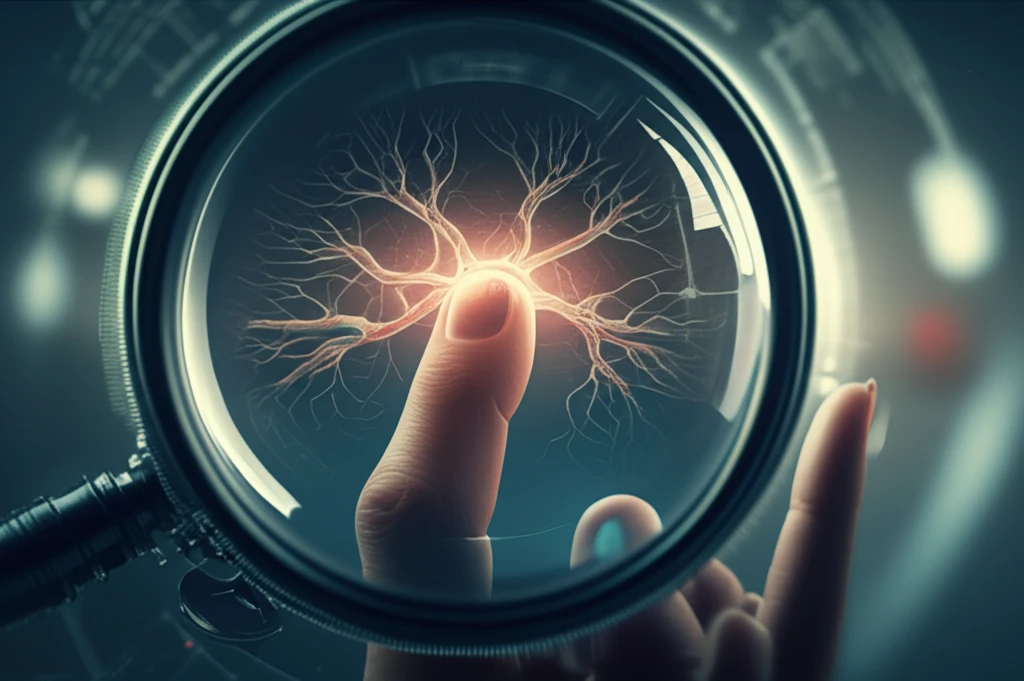
Digital Mucous Cysts: The Dermatoscopic Secret to Easy Diagnosis
"Uncover the dermatoscopic patterns that simplify the diagnosis of digital mucous cysts, preventing misdiagnosis and anxiety."
Digital mucous cysts are benign, fluid-filled bumps that commonly pop up on the fingers and toes, particularly around the joints. While usually harmless, these cysts can sometimes mimic other, more serious conditions, causing unnecessary worry and confusion. That's where dermatoscopy comes in—a simple, non-invasive technique that can help healthcare professionals accurately identify these cysts.
Dermatoscopy involves using a handheld device called a dermatoscope, which provides a magnified, illuminated view of the skin. This allows doctors to see details that are not visible to the naked eye, such as subtle vascular patterns and unique structural features. By recognizing these specific dermatoscopic patterns, healthcare providers can confidently diagnose digital mucous cysts, reducing the need for more invasive procedures.
In this article, we'll dive into the dermatoscopic features of digital mucous cysts, drawing from a study that examined three cases. We'll explain what to look for, how dermatoscopy can differentiate these cysts from other lesions, and why this technique is a valuable tool for anyone concerned about skin changes on their hands or feet.
Dermatoscopic Clues: What to Look For

The study highlights a consistent dermatoscopic pattern that can help identify digital mucous cysts. When the skin is examined without compression, the key feature is the presence of linear, branched, and serpentine vessels. These vessels appear as fine, winding lines that may resemble tiny branches or snakes. This pattern is due to the unique way blood vessels are arranged within and around the cyst.
- Without Compression: Linear, branched, serpentine vessels visible.
- With Compression: Translucent appearance, bright white areas, reduced vascular pattern.
- Location: Typically near the distal interphalangeal (DIP) joints.
- Symptom: Generally asymptomatic; some cysts may be painful.
The Value of Dermatoscopy: Peace of Mind
Digital mucous cysts are typically harmless, but the appearance of any new skin growth can be concerning. Dermatoscopy offers a simple, effective way to distinguish these benign cysts from other, potentially more serious, conditions. By understanding the characteristic dermatoscopic patterns, healthcare professionals can provide accurate diagnoses and alleviate unnecessary anxiety. If you notice a bump on your finger or toe, talk to your doctor about whether dermatoscopy could be a helpful tool in determining its nature.
